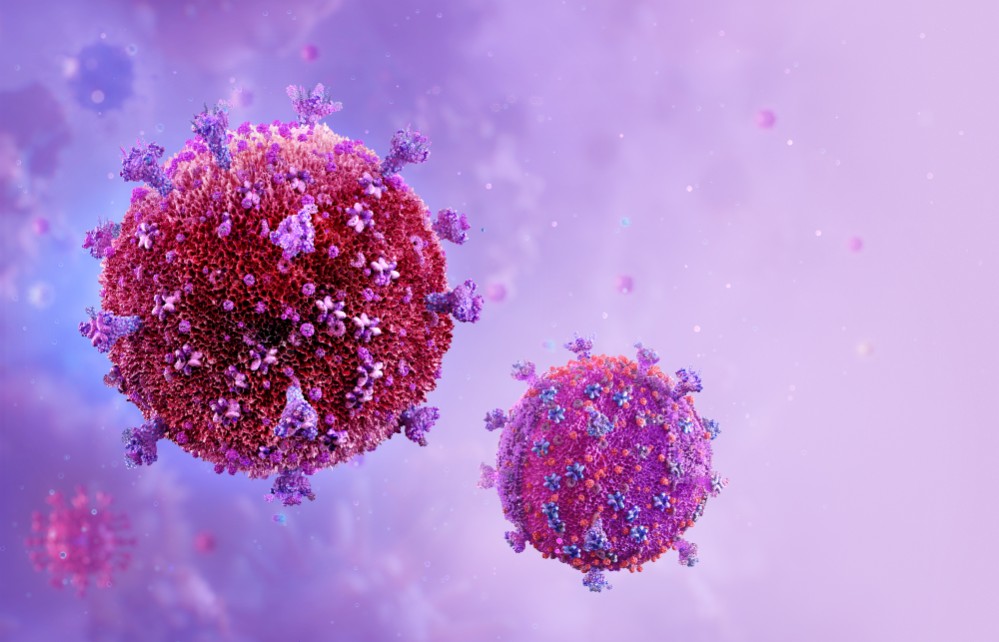During the month of the fight against AIDS, relevant information on the topic will be shared. This virus begins with the HIV virus (human immunodeficiency virus), which in its most advanced phase causes acquired immunodeficiency syndrome (AIDS). According to National Geographic, the name was given to this disease in 1982. Since that time, approximately 25 million people have died worldwide. Learn more about this topic below.
What is AIDS?
To explain AIDS we must start from HIV, which means human immunodeficiency virus, which attacks the CD4 cells (CD4 lymphocytes) of the immune system that fight infections. Without these cells it is a challenge for the body to fight infections and certain types of cancer. When there is no adequate treatment to treat HIV, AIDS appears.
How is it transmitted?
HIV is transmitted through bodily fluids such as: blood, breast milk, precum, vaginal secretions. Additionally, it is spread during vaginal or anal sex, by sharing an infected needle or by getting a tattoo. In fact, it can also be transmitted to the baby during pregnancy and childbirth, this is called perinatal transmission of HIV.
There are several stigmas about contagion, so it is important to deny them to avoid misinformation. You cannot get HIV from a hug, a handshake, sharing utensils, or from an insect bite. It should be taken into account that stigma affects the mental health of people who have the virus. As a consequence, it may happen that they do not go to their check-ups, they do not talk about the subject for fear of being rejected, or there are people who prefer not to undergo an examination to detect it.
Risk factor's
According to the WHO, the risk factors are: having sexual relations without using condoms, to prevent contagion they should always be used, suffering from sexually transmitted infections such as: syphilis, herpes, chlamydiasis, gonorrhea or bacterial vaginosis, sharing drug solutions, needles , syringes, receiving blood transfusions or organ transplants from someone who has the virus.
Symptoms
According to the Mayo Clinic, HIV turns into AIDS in about 8 to 10 years. This virus causes serious damage to the immune system, so diseases that generally do not appear in people with a strong immune system can occur. During this illness, the following may appear: sweats, chills, recurrent fever, chronic diarrhea, swollen lymph nodes, persistent white spots on the tongue and mouth, persistent fatigue, weight loss, skin rashes or lumps, pneumonia and depression.

Diagnosis
The WHO indicates that, to detect it, rapid diagnostic tests are carried out, the results of which can be delivered the same day. This test must be performed by a professional who can confirm the diagnosis. One of the most common tests is one that detects the antibodies that are generated as part of the immune response to fight the virus. Antibodies against HIV often appear 28 days after infection. If a person has had a high-risk exposure and has a negative result, they can get an additional test after 28 days. If a person has a positive result on a first diagnostic test, another test should be performed before starting care and treatment. For children under 18 months, it is detected with virological tests at birth or at 6 weeks.
Treatment
Access to antiviral treatments has made significant progress in this disease, because it has greatly reduced the number of deaths in the world. Although HIV has no cure, ART (antiretroviral treatment) stops the multiplication of the virus by preventing the immune system from progressively weakening; allowing it to defend itself against other infections. Allowing people who suffer from it to have a full and healthy life. It is proven that HIV patients who are taking ART and do not have detectable virus in their blood will not infect their sexual partners. In the case of pregnancy, the woman must have access to ART and take it as soon as possible to take care of her health and prevent the virus from being transmitted to the fetus. On the other hand, a health professional can administer ART to people without HIV, when they may have high exposure, as a prevention mechanism.
Finally, it must be remembered that HIV/AIDS is not only a matter of fighting against the disease, but also against the stigmas that surround it, which can negatively affect the well-being and quality of life of those who suffer from it. For this reason, it is important to stay informed and promote detection for timely treatment.
REFERENCES:
From Konstantinov / Stefanov / Kovalevsky / Voronin Visual Science Company, IC (2021, December 1). At the end of the 20th century, the disease caused by the HIV virus became one of the main health fears around the world. National Geographic. https://www.nationalgeographic.es/ciencia/sida
HIV stigma and discrimination. (2021b, April 21). Center for Disease Control and Prevention. https://www.cdc.gov/hiv/spanish/basics/hiv-stigma/index.html
HIV symptoms. (sf). HIV.gov. https://www.hiv.gov/es/informacion-basica/descripcion-general/acerca-del-vih-y-sida/sintomas-del-vih/
VIH y el SIDA: Conceptos básicos | NIH. (s. f.). https://hivinfo.nih.gov/es/understanding-hiv/fact-sheets/vih-y-el-sida-conceptos-basicos#:~:text=VIH%20significa%20virus%20de%20inmunodeficiencia,la%20infecci%C3%B3n%20por%20el%20VIH.
HIV/AIDS – diagnosis and treatment – Mayo Clinic. (2022, July 29). https://www.mayoclinic.org/es/diseases-conditions/hiv-aids/diagnosis-treatment/drc-20373531
World Health Organization: WHO & World Health Organization: WHO. (2023, July 13). HIV and AIDS. https://www.who.int/es/news-room/fact-sheets/detail/hiv-aids













